Surely many of you have been in this situation: spending hours, or even days, creating a passionate ad campaign. You envision a rush of clients, eagerly click the “Launch” button, and wait for brilliant results. But the joy quickly turns to disappointment when you get a notification the next morning: Facebook ads not approved or rejected. In reality, Facebook’s ad review process is sometimes as strict as a “courtroom,” where we have to prove the innocence of every word and image. In this article, Optimal Agency will analyze in detail the common reasons why Facebook ads not approved, and share practical tips to help advertisers increase their chances of being approved on the first submission.
Common mistakes that cause your ads to be unapproved
In the process of running ads, many of us have been confused when our ads were rejected without a clear reason. In reality, Facebook has very strict rules, and any small mistake can get your campaign rejected. Below, we will analyze the most common mistakes you need to avoid to increase your chances of being approved on the first submission.
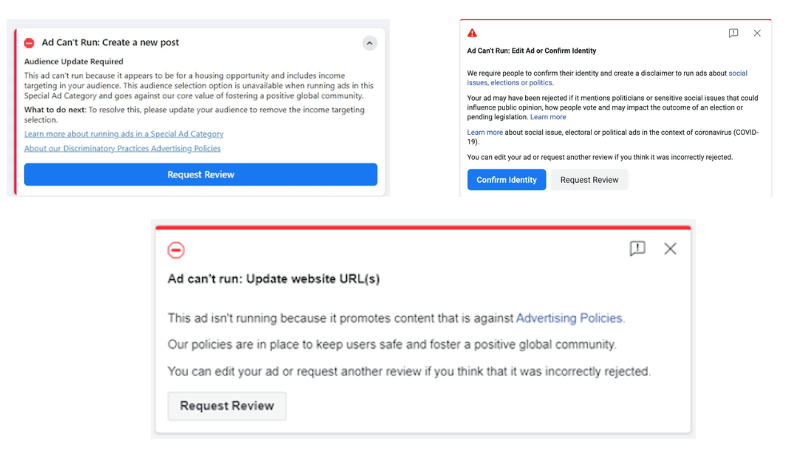
Absolutely prohibited content
Facebook has groups of content that are completely prohibited; no matter how much you optimize your ad, you won’t get it past them. This includes:
- Tobacco, cigars, e-cigarettes, vaping.
- Drugs or related products.
We once had a case where a video ad with just a 2-second scene of someone smoking a cigar was immediately rejected. After we removed this scene, the ad was approved.
Incorrect targeting by law
One of the reasons for ad rejection is incorrect targeting. For example, in the US, ads for alcoholic beverages must target people 21+; if you choose the 18+ group, it will definitely be rejected.
Language and grammar (rare but worth noting)
Although not common, language and grammar can also affect ad approval. Common mistakes include:
- Using too many emojis.
- “Street” or unprofessional language, for example: “Buy now and get free stuff.”
These cases are rarely completely rejected, but we advise you to be careful to keep your ads professional. We have an article on our blog about the List of banned words on Facebook for your easy reference.
Violating community standards
One of the most common reasons for Facebook ads not approved is a violation of Facebook’s Community Standards. Content that is often prohibited includes:
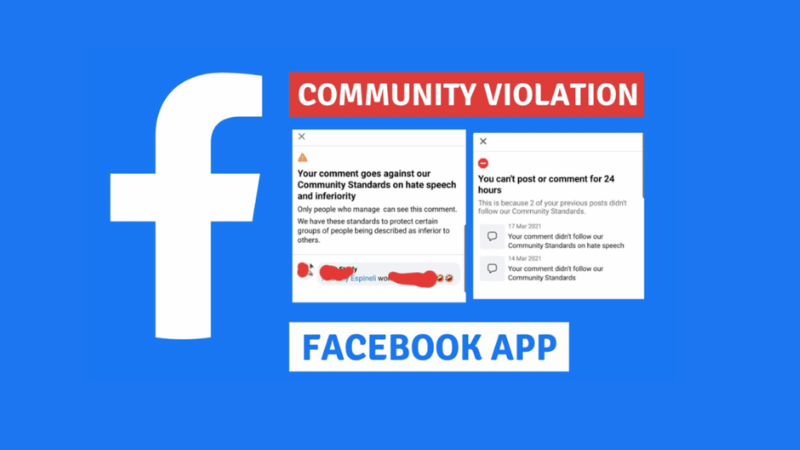
- Violent, bloody images, or accidents.
- Sexually suggestive content, or provocative language.
- Close-up images of breasts or butts that are not related to the purpose of product promotion.
For example, Lingerie brands can still use images of models wearing their products. The ad might be rejected initially, but when appealed, it is often reviewed and approved.
Misleading or sensational content
Facebook is very strict with ads that are misleading, exaggerated, or sensational. Mistakes that advertisers often make are:
- “Before & after” ads about weight loss.
- Overly promising claims like: “In just 1 week, your energy will increase by 100%.”
- Clickbait language like: “Just one click, you won’t believe what happens next.”
To avoid rejection, we advise you to use neutral phrasing, for example: “Discover how Product X can improve your daily life” instead of making a definite promise.
Specific audience-directed language
Facebook prohibits directly implying that a viewer belongs to a specific group. For example:
- “Join other transgender people” implies that the viewer is also transgender.
To comply with Facebook’s ad policy, we should use more objective phrasing, such as: “Connect with the transgender community.”
Problems with the Landing Page
Facebook not only reviews the ad content but also checks the destination page. Some factors that will get your ad a bad rating are:
- Too many annoying pop-ups.
- Auto-playing videos without a pause button.
- A landing page that contains prohibited content, even if the ad does not.
For example, a client of ours used 3 pop-ups within 50 seconds, which led to the ad being considered spam. After reducing it to just 1 pop-up, the ad was approved. The skill of running landing page ads for ad campaigns is very necessary. If you need experts to help run ads for the insurance or real estate sectors, contact Optimal Agency immediately.
Optimal Agency provides a high-quality, reputable, and stable system of Facebook ad accounts, helping businesses easily overcome review algorithm barriers to reach the right target audience and drive sustainable revenue growth.
When using an account here, businesses not only get to experience the latest ad features but also enjoy special privileges on bidding, optimizing the cost for each campaign.
How to fix a Facebook ad not approved
When your ads are rejected, it’s important to stay calm and handle it step by step. We will share a 5-step process to help advertisers reduce risk and increase the chance of getting approved again.
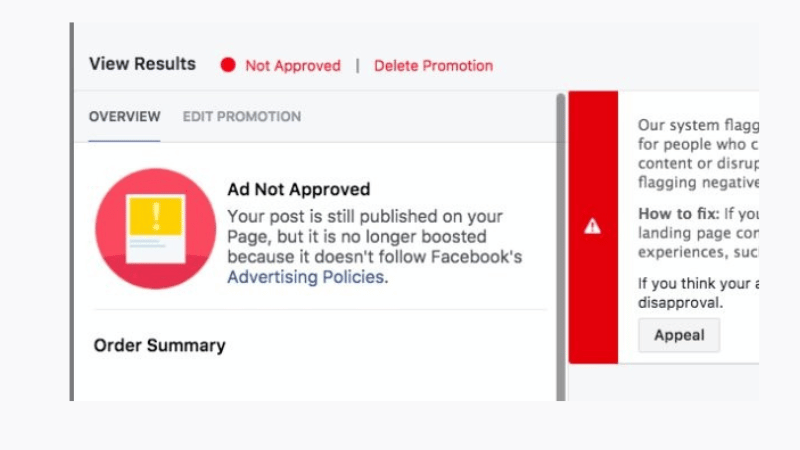
Step 1: Delete the rejected ad immediately
If your ad has been rejected by Facebook, we advise you to delete it right away, instead of leaving it as is. The reason is that every time an ad is rejected, it is recorded in the account history, and if this happens too often, the risk of the account being locked during a manual Facebook review increases.
If you are sure that your ad does not violate any policies (and is not in a sensitive industry like credit, crypto, forex, or gambling), you can confidently submit a request for re-review. Conversely, if you still have doubts, it’s best to delete the ad to protect the safety of your account.
Step 2: Re-check Facebook’s ad policies
A common mistake made by many advertisers is not keeping up with policy changes. We advise you to re-read all the rules to avoid overlooking small but important details. In the policy section, you will find:
- How the ad review process works.
- The types of content that are absolutely prohibited: child exploitation, nudity, violence, inciting crime, etc.
- Content that is easily violated, even unintentionally: discriminatory language, promising absolute results like “earn $5,000 in 7 days” or “lose 10kg in 10 days.”
These seemingly small details are often the main reasons for ad rejection.
Step 3: Check for technical issues with your website
If your ad leads to a website, make sure the domain is not having problems. We often use the Facebook Debugger tool to check.
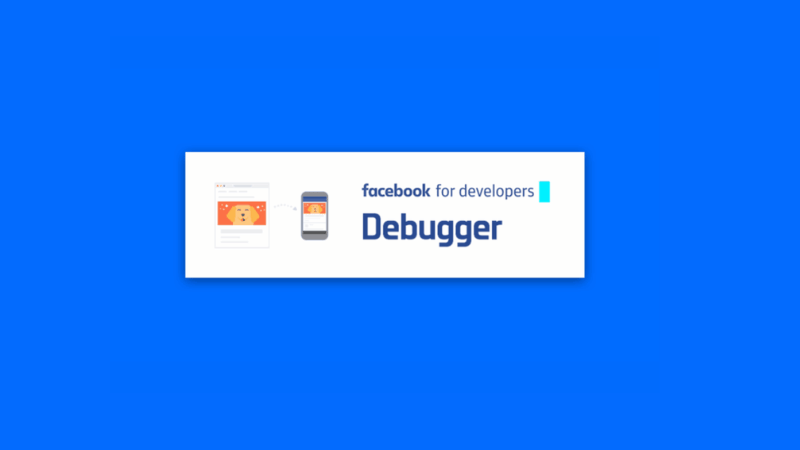
- If the domain is banned, you won’t be able to share the link anywhere on Facebook or Instagram.
- If the website has been hacked, contains malware, or redirects incorrectly, Facebook will automatically flag it.
After fixing the issue, go to the Debugger → enter the URL → select “Scrape Again” to have the system re-scan it. In many cases, the domain will be unblocked in just 30–60 minutes.
Step 4: Check ad content (Consult AI)
We find that most ad rejections come from the content or images themselves. Therefore, you need to ensure all copy complies with the policies.
A small tip: use an AI like ChatGPT to check it before you submit. AI can suggest phrases that are easily misunderstood or violate policies.
If you suspect the image is the cause, try replacing it with a simple, neutral stock photo. If the ad is approved, you will know the fault was in the creative and not the copy.
Step 5: Check ad account quality
Go to facebook.com/accountquality to see the status of your account. Here, you will know which ads were rejected, the reason, the warning history, and support from Facebook.
In rare cases, ads may still be rejected even if the account has no obvious errors. This could be a sign of a Silent Ban—the account shows no warnings, but all ads are rejected or get no results. If you encounter this situation, you should immediately contact the support team or consider using another account to avoid campaign interruption.
Submit an appeal when your ad is disapproved without a violation
When an ad is rejected and you are sure there are no policy violations, the right step is to file an appeal. This is an opportunity for the ad to be re-reviewed, this time possibly by AI or directly by a member of Facebook’s review team. The important thing is that appealing does not negatively affect the ad account, so you can submit multiple times if you are confident that the ad complies with the policy.
Step 1: Go to Account Quality
In Ads Manager, go to the Account Quality section, which shows all rejected ads.
Step 2: Select the rejected Ad and submit a request
Select the ad you want to appeal → click Request Review to start the process.
Step 3: Write a clear, specific appeal
This is the most important part. When submitting an appeal, you need to:
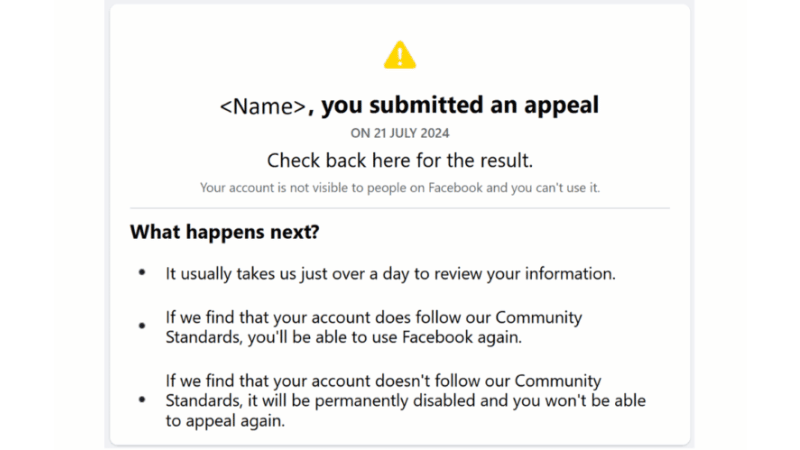
- Explain clearly: Prove that the ad fully complies with the Community Standards and Ad Policies.
- Point out what was changed: If there was a factor that could have been misunderstood, describe how you edited it to ensure compliance.
Example appeals:
- “Our ad for a dietary supplement product makes no excessive claims or ‘before-and-after’ images. The content only focuses on introducing the ingredients and general benefits. Therefore, we believe the ad fully complies with the policies.”
- “In the previous version, the ad video had a 2-second scene of a model smoking a cigar, which may have been misunderstood by the system. We have now removed this scene and confirm that the entire content is not related to tobacco or prohibited products.”
- “The images used in the lingerie ad are only for the purpose of illustrating the product and do not contain provocative elements or violate community standards.”
Step 4: Wait for a response from Facebook
Within 72 hours, Facebook will respond with the result of the appeal. If the ad is still rejected, we advise you to:
- Re-check all content (text, images, video, landing page).
- Carefully check the policies related to your industry.
- Adjust some elements that could be easily misunderstood, then resubmit the appeal.
Facebook ads not approved is a situation that almost all advertisers have experienced. However, if we understand the policies, carefully review the content, and know how to appeal correctly, this issue can be completely resolved. See this as an opportunity to re-optimize your ad, ensure compliance, and bring higher effectiveness to your business.
Frequently Asked Questions
Most ads are reviewed within 24 hours, and in some cases, it may take longer. Remember that an ad can be re-reviewed even after it’s already live. If you want your ad to run on a specific day or time, schedule the ad accordingly.
Whether your ad is approved or rejected, Facebook will notify you via email or within your account. When your ad is approved, it will be automatically published, and you can see the results in Ads Manager.
Facebook’s ad review process uses automated technology to apply the Ad Policies to many ads on the platform. However, in some cases, Facebook also has ad review specialists who perform manual reviews.
After an ad is approved and delivered to the target audience, if it receives negative feedback or too many bad reports from users, an additional review process will be carried out randomly to ensure accuracy.
Additionally, Facebook will use a combination of signals, such as user reports, to determine if it missed anything during the initial review.
When the additional review process takes place, Facebook will notify you if it finds that your ad violates the Ad Policies. If a policy violation is found, Facebook will reject the ad and stop its delivery. This is why an ad that was once approved is later rejected.